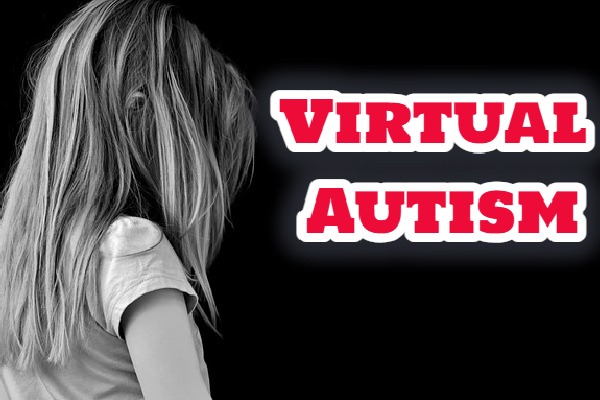Virtual Autism in Children: What Every Parent Should Know

Virtual autism is a term used to describe autism-like symptoms in young children caused by excessive screen exposure, particularly in children under the age of three. While not an officially recognized medical diagnosis, it highlights the developmental and behavioral challenges linked to prolonged digital device use. Here is a detailed overview:
What is Virtual Autism?
Virtual autism refers to a set of developmental delays and behavioral symptoms resembling Autism Spectrum Disorder (ASD) that emerge due to excessive screen time. Unlike traditional autism, which has genetic and neurological underpinnings, virtual autism is believed to result from environmental factors, specifically the overuse of digital devices during critical developmental years.
Key Symptoms
Children with virtual autism may exhibit:
Language and communication delays: Difficulty forming sentences, limited vocabulary, or delayed speech development.
Impaired social interaction: Lack of eye contact, reduced use of gestures or facial expressions, and preference for screens over human interaction.
Behavioral issues: Hyperactivity, aggression, repetitive behaviors, or restricted interests.
Attention problems: Short attention spans and difficulty focusing on tasks.
Sleep disturbances: Poor sleep patterns due to blue light exposure from screens.
Physical inactivity: Reduced active play leading to sedentary lifestyles and potential health issues like obesity.
Causes of Virtual Autism
The primary driver of virtual autism is excessive screen exposure during early childhood. Key contributing factors include:
Reduced human interaction: Screens replace face-to-face communication, limiting opportunities for learning social cues and language skills.
Overstimulation: Fast-paced visuals and sounds from digital devices can overwhelm young brains, leading to sensory overload.
Disruption of neural development: Prolonged screen use during critical periods of neuroplasticity may alter brain pathways essential for emotional regulation and problem-solving.
Sleep disruption: Exposure to blue light interferes with melatonin production, impacting cognitive and emotional health.
Differences Between Virtual Autism and ASD
Preventive Measures
To mitigate the risk of virtual autism:
Limit screen time:
Follow pediatric guidelines (e.g., no screens for children under 18 months; 1 hour/day for ages 2–5).
Encourage real-life interaction:
Engage children in face-to-face communication, storytelling, and interactive play.
Promote active play:
Provide opportunities for physical activities like outdoor games.
Create screen-free zones/times:
Avoid screens during meals and before bedtime.
Monitor content:
Ensure any screen time is educational and age-appropriate.
Interventions for Virtual Autism
If symptoms are observed:
Gradually reduce screen exposure.
Increase social interaction through playgroups or family activities.
Seek professional guidance from pediatricians or child development specialists for tailored interventions.
Virtual autism underscores the importance of balanced digital use during early childhood to support healthy development. Early identification and intervention can help reverse its effects in most cases.
What is Virtual Autism?
Virtual autism refers to a set of developmental delays and behavioral symptoms resembling Autism Spectrum Disorder (ASD) that emerge due to excessive screen time. Unlike traditional autism, which has genetic and neurological underpinnings, virtual autism is believed to result from environmental factors, specifically the overuse of digital devices during critical developmental years.
Key Symptoms
Children with virtual autism may exhibit:
Language and communication delays: Difficulty forming sentences, limited vocabulary, or delayed speech development.
Impaired social interaction: Lack of eye contact, reduced use of gestures or facial expressions, and preference for screens over human interaction.
Behavioral issues: Hyperactivity, aggression, repetitive behaviors, or restricted interests.
Attention problems: Short attention spans and difficulty focusing on tasks.
Sleep disturbances: Poor sleep patterns due to blue light exposure from screens.
Physical inactivity: Reduced active play leading to sedentary lifestyles and potential health issues like obesity.
Causes of Virtual Autism
The primary driver of virtual autism is excessive screen exposure during early childhood. Key contributing factors include:
Reduced human interaction: Screens replace face-to-face communication, limiting opportunities for learning social cues and language skills.
Overstimulation: Fast-paced visuals and sounds from digital devices can overwhelm young brains, leading to sensory overload.
Disruption of neural development: Prolonged screen use during critical periods of neuroplasticity may alter brain pathways essential for emotional regulation and problem-solving.
Sleep disruption: Exposure to blue light interferes with melatonin production, impacting cognitive and emotional health.
Differences Between Virtual Autism and ASD
| Aspect | Virtual Autism | Autism Spectrum Disorder |
|---|---|---|
Cause | Environmental (excessive screen time) | Genetic and neurological factors |
Onset | Linked to early excessive screen exposure | Present from birth or early childhood |
Symptoms | Similar to ASD but often reversible | Lifelong condition with varying severities |
Preventive Measures
To mitigate the risk of virtual autism:
Limit screen time:
Follow pediatric guidelines (e.g., no screens for children under 18 months; 1 hour/day for ages 2–5).
Encourage real-life interaction:
Engage children in face-to-face communication, storytelling, and interactive play.
Promote active play:
Provide opportunities for physical activities like outdoor games.
Create screen-free zones/times:
Avoid screens during meals and before bedtime.
Monitor content:
Ensure any screen time is educational and age-appropriate.
Interventions for Virtual Autism
If symptoms are observed:
Gradually reduce screen exposure.
Increase social interaction through playgroups or family activities.
Seek professional guidance from pediatricians or child development specialists for tailored interventions.
Virtual autism underscores the importance of balanced digital use during early childhood to support healthy development. Early identification and intervention can help reverse its effects in most cases.